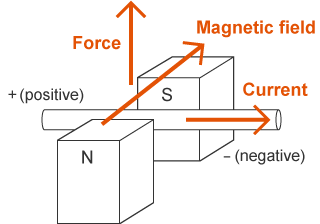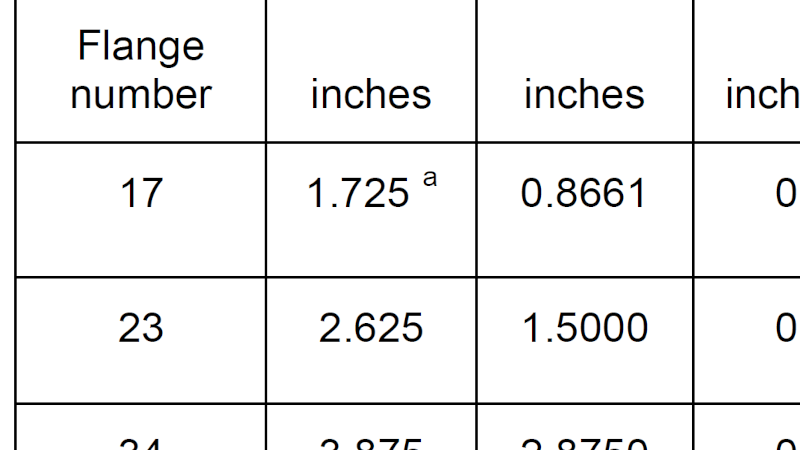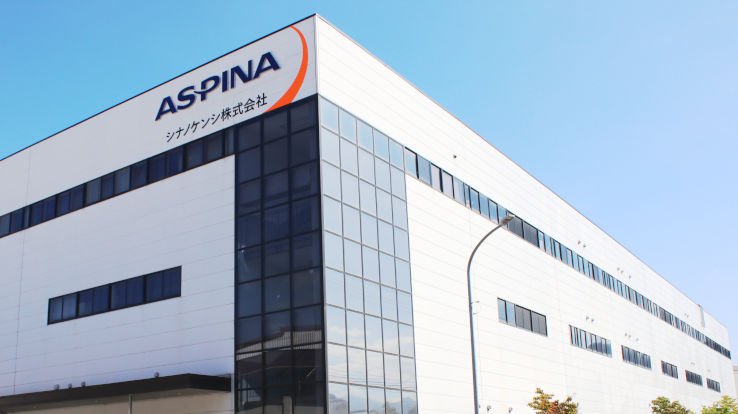What is an electric motor?
-
Automation
-
Health & wellness
-
Life environment
-
Automotive
-
Space

24 Mar. 2021
Electric motors are devices that convert electrical energy into mechanical energy, usually in the form of rotational motion. In simple terms, they are devices that use electric power to generate motive power.
Not only do electric motors provide a simple and efficient means of generating high levels of drive output, but they are also easy to make smaller, allowing them to be incorporated into other machinery and equipment. As a result, they are found in a wide variety of applications in both industry and daily life.
Principle of operation
Do you remember being taught Fleming's left-hand rule at school? Electric motors are an application of this rule, with the force generated by electric current flowing through a coil in the presence of a magnetic field causing the motor shaft to rotate.
In this diagram, Fleming's left-hand rule tells us that an upward force is generated when current flows perpendicular to the magnetic field from the magnet*.
-
*Magnetic field: A region in which a magnetic force is present (directed from the north (N) to the south (S) pole of the magnet).

How rotation is achieved in an electric motor
In the case of a brushed DC electric motor*1, for example, this force can be used to sustain continuous rotation by reversing the direction of current flow at each half-turn of the coil (which is achieved by means of the brushes and commutator*2)
-
*1DC motor: A motor powered by direct current (DC)
-
*2Brushes and commutator: Used together, these reverse the direction of current flow each time the motor shaft makes half a turn.

History of electric motors
The British scientist Michael Faraday is recognized as being particularly influential among the many scientists from the 19th century who played a part in the invention and development of electric motors. In 1821, Faraday conducted the successful experiment in which the rotation of a wire was achieved using a magnet together with a magnetic field generated by an electric current. He went on to invent the law of magnetic induction in 1831, laying the groundwork for significant progress in electric motors and generators.
Over time, many other types of electric motors were devised, along with structures that can be considered the archetypal DC motor.
Subsequently, in 1872, the practical electric motor was not so much invented as discovered when one of the generators exhibited at the Vienna World's Fair started rotating on its own after being accidentally connected to another generator. This led people to realize that the way generators worked could also be used in motors. The rapid growth that followed in the practical use of generators was such that they became a mainstay of many industries in the 20th century.
Electric motors and generators
Whereas electric motors convert electrical energy into rotation and other forms of mechanical energy, generators perform the reverse role of converting mechanical energy into electrical energy. Despite having these opposite functions, motors and generators are very similar in design and principle of operation. In fact, a simple experiment in which two model motors are connected together is all it takes to demonstrate that an electric motor can also operate as a generator. Naturally, given the different ways in which they are used, the two types of machine have always been developed separately.
Types of electric motors
Electric motors come in many different forms depending on the type of current flow they use, the design of their coils (windings), and how they generate a magnetic field. Accordingly, they can be categorized in many different ways. The following describes three types of electric motors commonly used in both home and industry.
DC motors
These are motors driven by a DC power supply. They are grouped into brushed or brushless (BLDC) motors depending on whether or not they use brushes*1. Whereas brushed DC motors only need to be connected to a DC power supply to run, brushless DC motors require a sensor to determine the orientation of the rotor's*2magnetic poles and a drive circuit to supply the appropriate current.
-
*1Brush: A part used in conjunction with a commutator.
-
*2Rotor: The part of the motor that rotates. The motor shaft forms part of the rotor.

For more information:
What is a DC motor? - DC motor types, how they work, and how to control them
What is a brushless DC motor? What is the difference between brushless motor and brushed motor?
AC motors
These are motors driven by an AC power supply. They are grouped according to whether this power supply is single-phase*1or three-phase*2. Single-phase motors are further grouped into capacitor motors that use a capacitor*3to generate torque and shaded-pole motors that have an additional coil (winding) called a shading coil*4.
-
*1Single-phase: The conventional AC power supply typically available in homes.
-
*2Three-phase: A form of AC power supply mainly found in industry.
-
*3Capacitor: An electronic component that stores electrical energy.
-
*4Shading coil: A closed-circuit coil wound around part of the stator core.
Stepper motors
These are motors that rotate by a fixed step (angle) each time a pulse*1is input. Stepper motors can be grouped by the structure of their rotor. Permanent magnet (PM) motors*2have a magnet in the rotor*3, variable-reluctance (VR) motors*4have an iron core, and hybrid motors have both.
-
*1Pulse: A short burst of electricity produced by turning the power supply on and off.
-
*2Rotor: The part of the motor that rotates. The motor shaft forms part of the rotor.
-
*3PM motor: A motor that contains a permanent magnet
-
*4VR motor: A variable-reluctance motor in which cores are arranged like the teeth of a gear, with this layout determining the step angle.

For more information:
Summary of electric motor types
The table below lists the main features of the three different types of motors.
| Category | Sub-category | Structure | Drive mechanism | |
|---|---|---|---|---|
| Rotor | Stator | |||
| DC motor | Brushed DC motor | Winding Commutator |
Permanent magnet Brushes |
Driven directly by DC power supply |
| Brushless DC motor | Permanent magnet | Winding Position sensor |
DC power supply and drive circuit | |
| AC motor | Single-phase capacitor squirrel‑cage induction motor | Core Bar |
Winding | Driven by single-phase AC power supply Requires a capacitor |
| Single-phase shaded-pole squirrel‑cage induction motor | Core Bar |
Winding Shading coil |
Driven by single-phase AC power supply Requires a capacitor |
|
| Three-phase squirrel‑cage induction motor | Core Bar |
Three-phase winding | Driven by single-phase AC power supply |
|
| Stepper motor | Permanent magnet (PM) stepper motor | Permanent magnet | Winding | DC power supply and drive circuit |
| Variable-reluctance (VR) stepper motor | Core | Winding | DC power supply and drive circuit | |
| Hybrid stepper motor | Permanent magnet Core |
Winding | DC power supply and drive circuit | |
A variety of other types of electric motor exist in addition to those listed above.
| Type | Characteristics |
|---|---|
| Linear motor | A motor that slides in a linear direction |
| Ultrasonic motor | A motor that moves by means of ultrasonic vibrations |
| Coreless motor | A brushed DC motor with a rotor that lacks an iron core, or a brushless motor with a stator that lacks an iron core |
| Universal motor | A motor with a wound rotor and wound stator that works with both alternating and direct current |
| Hysteresis motor | An AC motor that uses a material in the rotor that exhibits hysteresis and rotates by means of hysteresis torque |
| SR motor | A VR stepper motor that also has a function for detecting rotor position, which allows it to avoid loss of synchronization |
Electric motor applications
While electric motors are used in many different ways, the following lists common applications for brushless DC motors and stepper motors supplied by ASPINA.
Applications for brushless DC motors
Given their characteristics of small size, high output, low noise and vibration, and long life, brushless DC motors have a wide range of uses in applications such as ventilation systems (air cleaners and other forms of air conditioning), home appliances, refrigerators, water heaters, vending machines, copiers, printers, projectors, office equipment, instrumentation, vehicles, and medical devices.
- Air conditioners
- Financial terminals (ATMs), change machines, currency exchange machines, ticket vending machines
- Home appliances
- Clean rooms
- Water heaters and burners
- Optical products
- Vending machines
- Printers
- Freezer and chiller showcases
- Copiers
- Healthcare equipment
- Office equipment
- Laboratory analysis systems
For more information:
Brushless DC motor applications: examples that demonstrate their features
Applications for stepper motors
The excellent halting accuracy, high torque at medium and low speeds, and superior responsiveness of stepper motors means that they can be used in a wide range of drive applications that demand precise control.
- Production machinery
- Optical disk drives (Blu-ray and DVD drives, etc.)
- Medical equipment
- Laser printers
- Laboratory analytical instruments
- Digital cameras
- ATMs
- Air conditioning louvers
- Vending machines
- Amusement machines
- Ticket vending machines
- Copiers
- Robots
For more information:
Stepper motor applications: Examples that demonstrate their features
Overcoming your problems with electric motors
ASPINA supplies a variety of compact, light, and quiet brushless DC motors and stepper motors. We do not only supply them as standalone products, but also as system products that incorporate drive and control systems as well as mechanical design. These are backed by comprehensive support that extends from prototyping to commercial production and after-sales service.
ASPINA can offer solutions that are tailored to suit the functions and performance demanded by a diverse range of industries, applications, and customer products, as well as your particular production arrangements.
ASPINA supports not only customers who already know their requirements or specifications, but also those who are facing problems at early stages of development.
Do you struggle with the following concerns?
Motor selection
- Don't have detailed specifications or design drawings yet, but need advice on motors?
- Don't have anyone in-house with expertise in motors and can't identify what sort of motor will work best for your new product?
Motor and associated component development
- Want to focus your resources on core technology, and outsource drive systems and motor development?
- Want to save the time and effort of redesigning existing mechanical components when replacing your motor?
Unique requirement
- Need a custom motor for your product, but been declined from your usual vendor?
- Can't find a motor that gives you the control you require, and about to give up hope?
Seeking answers to these problems? Contact ASPINA, we're here to help.
List of the same series columns
- NEMA stepper motor sizes chart and selection guide
- What does a stepper motor do?
- What is a brushless DC motor? What is the difference between brushless motor and brushed motor?
- What is a DC motor? - DC motor types, how they work, and how to control them
- Applications for blower motor
- What is a blower motor?
- Features and applications of DC motors
- Advantages of brushless DC motors over brushed DC motors
- Is this brushless motor cheap or expensive? - What factors determine its price?
- What is a geared brushless DC motor?
- How does an electronic speed controller for a brushless DC motor work? And what should you consider when you choose the right one?
- Small brushless motors
- What are the disadvantages of brushless DC motors? And how can they be overcome?
- Advantages of brushless DC motors: How they differ from brushed DC motors
- What is an actuator?
- Do brushless DC motors require a drive circuit? – Controlling brushless DC motors
- What is a stepper motor?
- How are stepper motors controlled? - Speed control of stepper motors
- How are DC motors controlled? - Speed control of DC motors
- Brushless DC motor applications: examples that demonstrate their features
- Stepper motor applications: Examples that demonstrate their features
- Motors designed for easy control: How do stepper motors work?
- What are the differences between brushed and brushless DC motors?
- What is a PSC motor
- What is a servo motor?
- What is a blower?
Contact us for more information
- New inquiry
- Prototype
- Upgrade
- Customization
- Your spec
- Literature
- Support
- Others











